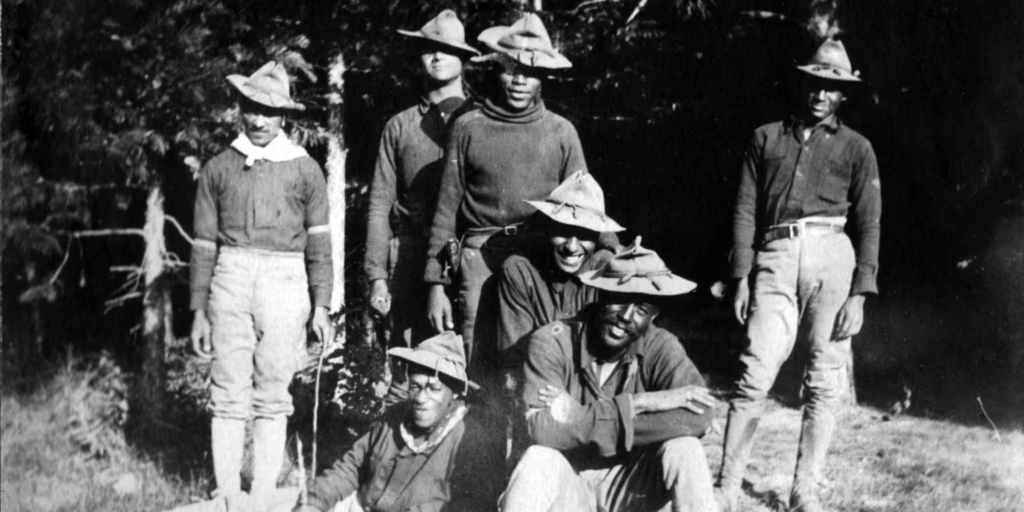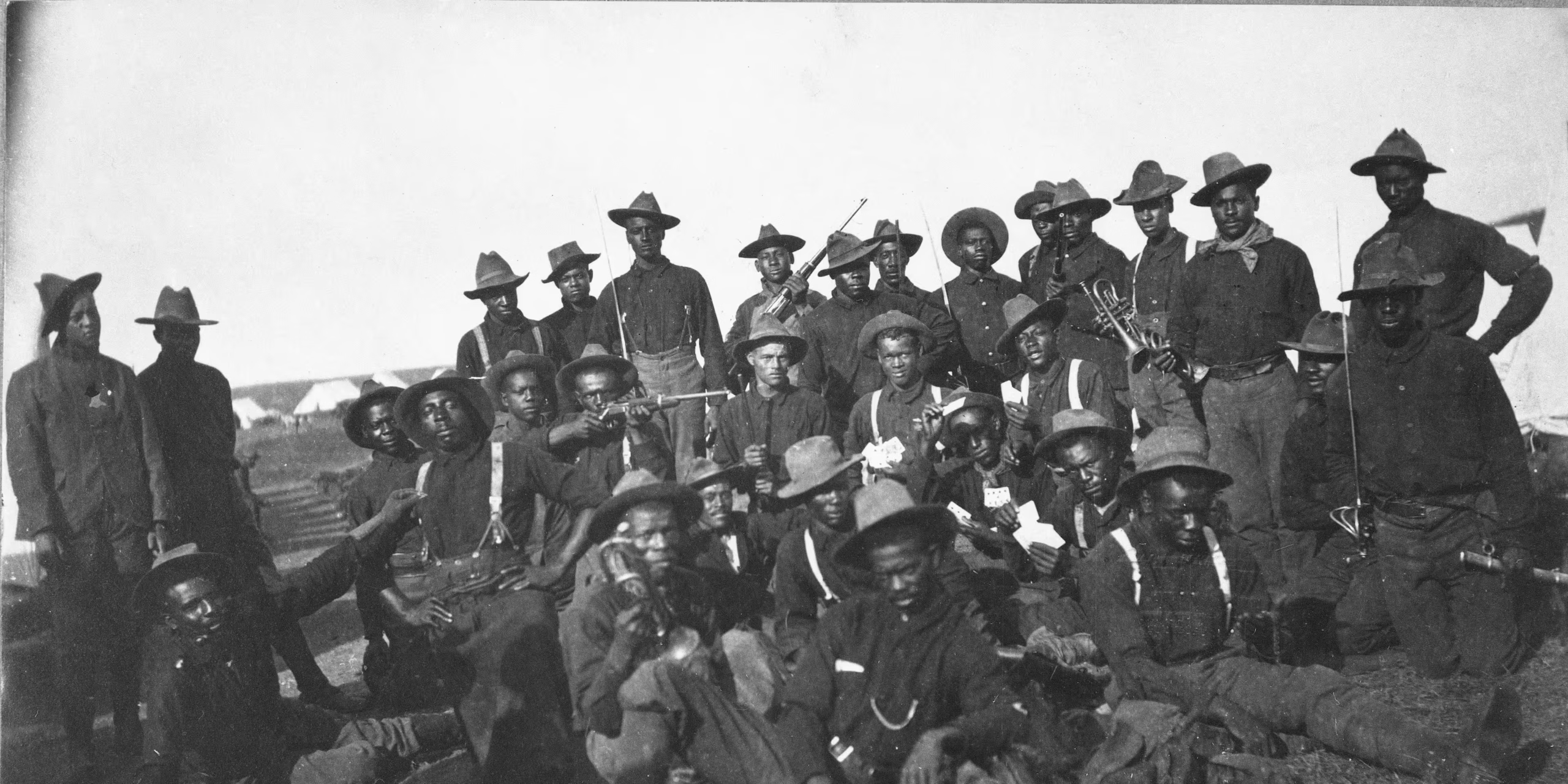The term “Buffalo Soldiers” was first used to describe the African-American Army regiments formed after the Civil War, marking the beginning of Black military service in peacetime.
According to Wikipedia, these units included the 9th and 10th Cavalry Regiments, and later the 24th and 25th Infantry Regiments, all established in 1866 at Fort Leavenworth, Kansas.
Their nickname—“Buffalo Soldiers”—is believed to have been bestowed by Native American tribes. As recorded by the National Museum of African American History and Culture, it may have been inspired by the soldiers’ coarse, curly hair, their fighting spirit, or the buffalo robes they wore in harsh weather. Whatever its origin, the name stuck, becoming a lasting symbol of strength, resilience, and respect.
(Members of the 10th Cavalry Regiment on horseback in the American West, 1870s.)

Service and Duties
The Buffalo Soldiers served at a pivotal time in American expansion.
As detailed by The Story of Texas. These men played critical roles during the Indian Wars of the late 19th century. They were tasked with protecting settlers, escorting wagon trains, building forts, and laying telegraph lines. Also keeping order across the vast western frontier.
Their service extended beyond the mainland. They fought bravely in the Spanish–American War. The Philippine–American War, and even took part in the Punitive Expedition against Pancho Villa in Mexico.
Beyond combat, they also made history as some of America’s first park rangers. The National Park Service highlights its work in Yosemite and Sequoia National Parks. It built roads, maintained trails, and safeguarded public lands years before the National Park Service officially existed.
“They were soldiers, builders, protectors, and pioneers—carving order out of wilderness and earning respect on every frontier.” — Black Perspective News
Challenges and Context
Despite their heroism, the Buffalo Soldiers lived under the shadow of segregation and discrimination.
Encyclopedia Britannica notes that while these regiments were composed of Black soldiers. White officers commanded them, and their contributions were often overlooked or undervalued.
They faced not only harsh conditions and limited supplies, but also open hostility from both civilians and fellow soldiers.
As the National Museum of African American History and Culture points out. Their service on Indigenous lands adds complexity to their story. Honoring their bravery while recognizing the moral tensions of their missions during westward expansion.
Legacy
The Buffalo Soldiers left behind a trail of endurance, professionalism, and quiet defiance.
According to the Army Museum and the Buffalo Soldiers National Museum, their service laid the foundation for the integration of African Americans into the U.S. military, proving that valor and excellence know no color.
Their legacy continues to inspire generations, celebrated in songs, monuments, museums, and cultural tributes across the country. Their story is not only about fighting wars—but about overcoming the battles of bias, invisibility, and inequality.
“They fought for a country that did not yet fight for them—but their courage helped change that country forever.” — Independent Rob, BPN


